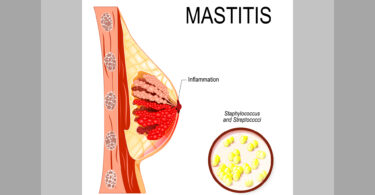Lac caninum is a sycotic remedy. It is prepared from the milk of the dog (bitch). This remedy has in it the nature of the dog, an animal that has been totally controlled and civilized so that it has to suppress its basic animal nature and can only express its controlled, civilized side. It is dependent on its master for food and so it is out to please him. Its survival depends upon keeping its master happy by its performance, its affection, etc. It has to perform or it won’t be wanted anymore and its master will kick it out. This need to please is the animal side of Lac caninum, but the dog knows that no matter how much it tries to please, it will never be equal to the human. It feels inferior, knows that it is at the bottom of the hierarchy. The animal side is also malicious (if you pull a dog’s tail, it will bite you). Lac caninum persons are very passionate, very lascivious. They can be quite aggressive and defensive.
The main theme in Lac caninum is dominance (the bigger dominating the smaller) and who is going to be on top. Lac caninum persons can be irritable and ferocious, but if someone is more irritable and ferocious, they give up, they submit. Then arises the conflict within themselves: “Do I want to be what I am?” They develop a feeling of low self-worth: “I am not good enough. I feel dirty and horrible”, and become contemptuous of themselves. This dirty feeling is also common to animal remedies, and it is similar to the feeling of Ambra grisea (prepared from the sperm whale). But while Lac caninum simply feels: “I am not good enough, I am despised and looked down upon”, Ambra grisea feels “like shit”. Lac caninum patients suffer by comparison with others. They try hard to please, to be liked, cared for and accepted because they feel left out and rejected. They can develop malice and hatred because they hold somebody else responsible for their condition. These feelings can sometimes be accompanied by a history of sexual abuse.
The Lac caninum situation is that of a dark-skinned girl child in an Indian home. Her sisters are fairer than her. She tries hard to get fair-skinned, but knows she will never be fair-skinned. She is constantly being compared to her “better looking” sisters, and she soon begins to hate herself. People bring clothes only for her sisters. Nobody listens to her; she is just not clever enough – everything she says is stupid and foolish. She feels she is uncared for and neglected because her body looks bad. She starts feeling dirty, and washes herself frequently. People disturb her almost as if they were snakes and vermin (“Delusion snakes in and around her”). She starts lacking in confidence, becomes totally irresolute and believes that all that she says is a lie. She loathes life and goes into tremendous depression, and nothing can be done to make her feel better. She feels worthless and is disgusted with herself, thinks she matters little, feels unimportant, like an untouchable. She is sure she has an incurable disease and she will die. She wants to commit suicide and put an end to her suffering. She blames others for her condition and can get angry with them for treating her the way they do – she can develop hatred, and become revengeful. She feels she has been given a raw deal, and she becomes mean (“Writing meanness to her friends”).
Jurgen Becker tells me that a common expression amongst African-American blacks is “Mofo” – surely a Lac caninum expression. The feeling of a black person in the U.S. even today must be: “I am unlucky, I have been born with a black skin. I will try to perform, but I know that ultimately I will still be black”. This is also a Lac caninum situation.
Rubrics:
— Contemptuous, self, of.
— Delusion, despised, is.
— Delusion, dirty, he is.
— Delusion, diminished, short, he is.
— Delusion, looked down upon, she is.
— Delusion, thinks all she said is a lie.
— Delusion, snakes in and around her.
— Malicious.
— Moral feeling, want of.
— Rage, fury.
— Rudeness.
— Writing meanness to her friends.
— Anxiety, success, from doubt, about, of.
Phatak’s Materia Medica:
— Thinks himself of little consequence.
— One’s own body seems disgusting.
— Imagines he wears someone else’s nose.
— Every symptom seems a settled disease, which is incurable.
Kent:
— Desires highly seasoned food.
— Pain, mammae, menses, before.
Phatak:
— Craves condiments.
— Dirty, he is.
— Fear of falling downstairs.
— Lactation, milk absent.
— Mammae before menses.
— Self loathing.
— Taste salty, only salty food tastes natural.
— Thinking himself too little.
If you would like to learn more about Dr. Sankaran’s work, courses and lectures please visit: http://www.onlinehmp.com
To read about the philosophical approach to developing these remedy pictures, see Dr. Sankaran’s introduction to Soul of Remedies






Dear Dr.Sankaran
You have elucidated dog’straits and tried rationalise. .The symptoms from Dr.Kent, Dr.Phatak are nicely brought out while referring to other illustrious Doctors of repute.We to include Dr.Boericke’s on Lac Can as well which are well defined peculiarities
Good Luck
Dr.S.L.Patil
[email protected]
9833041468
Dear sir ,
wish your long live for my interest that a doctor like you enriching the homeopathy so much in your time , I don’t know who will be next of you. Your presentation is excellent ,no comments. I hear your lecture and read your books. i wish to send my daughter /son to you for learning homeopathy .
your writing is highly appreciated
Dr.Jashim uddin M.D
The paper offers some interesting and useful insights.
However, when the author attributes human thoughts to dogs, such as , ” ………but the dog knows that no matter how much it tries to please, it will never be equal to the human ” he stretches his imagination too far, or so I think.
Barthel’s Synthetic Repertory has Lac-c under the rubric “Delusions – diminished – all is’. (Under this sub-rubric there are five other remedies and there is no emphasis on Lac-c, expressed as bold lettering or italicization. )
Now, sensing ‘all’ as diminished is a far cry from ‘one/he’ is diminished. The latter can be connected to a delusion of inferiority , but certainly not the former. So this particular delusion looks like an inexplicable delusion and not a sign of inferiority transferred from dog’s milk to man.
Further, “Chronic sadness, everything so dark; irritable, ugly, hateful” is how Kent characterizes Lac-c mental state. (The author of the paper refers to this ugly part of a dog’s nature too.) Anyone who has had dogs as pets would wonder as to how the more positive side of the dog, its affectionate nature, its great loyalty to man and its own group is not reflected in Lac c.; and sadness, which is the rarest of the rare moods among dogs, has been reflected.
Paradoxically, Lachesis appears under the rubric ‘Affectionate’ in the Synthetic Repertory? Now, who has heard of affectionate Surukuku snakes?
The point I am trying to make is this: Seeing some kind of cause-effect or object-mirrored image relationship between animals and homeopathic remedies prepared from them seems to me as too much of a stretch. As a mnemonic device to remember symptoms of remedies, such cor-relationships are fine. But believing that such co-relationships actually exist and building a new science around them is not in the interest of homeopathy, in my very humble opinion.
Generation of creative hypotheses is a must if homeopathy is to grow, but such hypotheses must go hand in hand with supporting evidence and rigorous questioning.
Hope to be forgiven for my heresy!
I’m posting this response for Govindarajan Sankaran
The rubrics that indicate the inferiority feeling of Lac can are as follows
mind; DELUSIONS, imaginations; smaller; he is (36)
mind; DELUSIONS, imaginations; diminished; short, he is (1)
mind; DELUSIONS, imaginations; insulted, he or she is (27)
mind; DELUSIONS, imaginations; looked down upon, that she is (6)
mind; DELUSIONS, imaginations; useless, is (6)
mind; DELUSIONS, imaginations; ugly, is (30)
mind; DELUSIONS, imaginations; worthless, he is (23)
Nice presentation. Help to understand remedy completely.